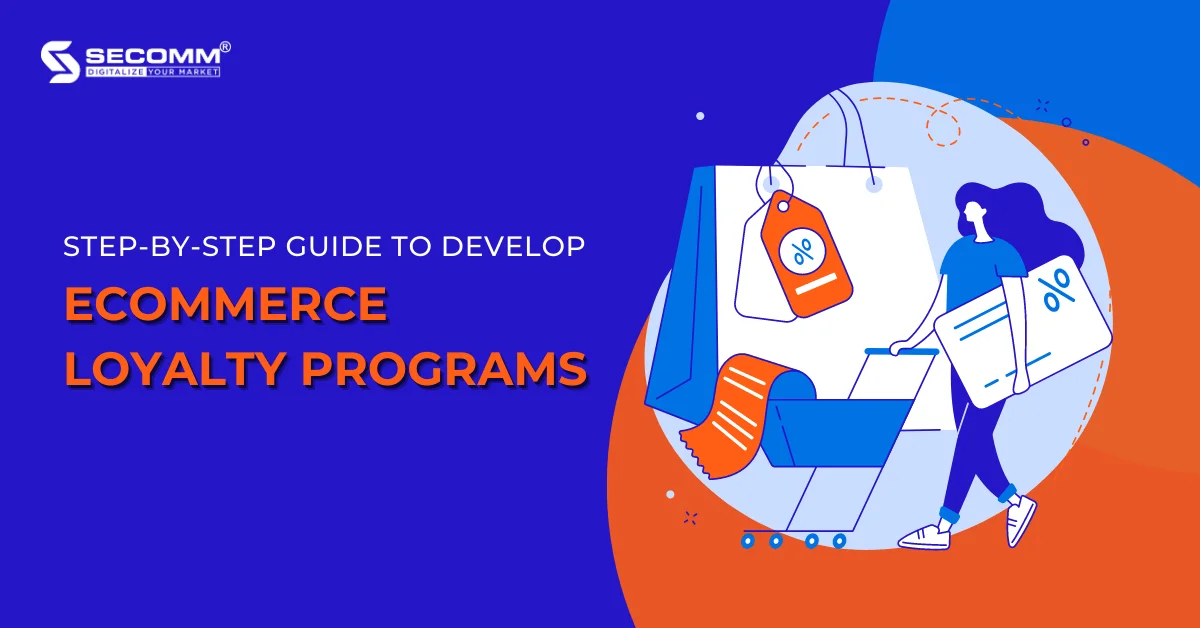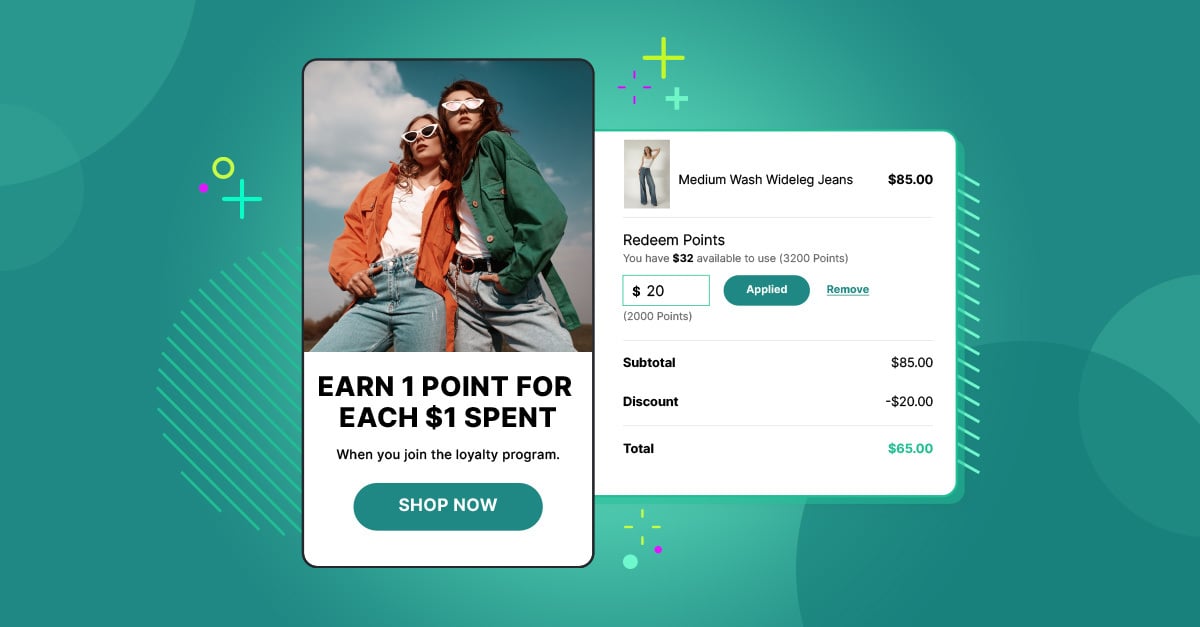Mastering E-Commerce Loyalty Programs: A Comprehensive Guide to Building Customer Loyalty and Boosting Sales
In the competitive world of e-commerce, businesses are constantly looking for ways to keep their customers coming back. One of the most effective strategies to achieve this is by implementing e-commerce loyalty programs. These programs not only help retain existing customers but also drive sales, enhance brand loyalty, and create a sense of community among consumers. But how do you create a loyalty program that stands out and drives meaningful results? This detailed guide will help you understand everything you need to know about designing, implementing, and optimizing e-commerce loyalty programs.

What is an E-Commerce Loyalty Program?
An e-commerce loyalty program is a rewards-based initiative designed to encourage customers to continue shopping with your brand. Through such programs, customers earn rewards, discounts, or exclusive benefits based on their purchases, engagement, or referrals. These programs are vital in increasing repeat purchases, enhancing customer satisfaction, and fostering long-term relationships with your customers.
Why Are E-Commerce Loyalty Programs Important?
- Customer Retention: It is well-documented that retaining a customer is far cheaper than acquiring a new one. A loyalty program can increase customer retention rates by providing incentives for continued purchases.
-
Increased Sales and Revenue: Loyalty programs can directly contribute to higher sales. Loyal customers tend to spend more, as they are more likely to take advantage of rewards, discounts, and special offers.
-
Brand Advocacy: Customers who feel valued by a brand are more likely to share their positive experiences with others. This often leads to word-of-mouth marketing and referrals.
-
Better Customer Data: Loyalty programs allow businesses to gather valuable insights into customer behavior, such as purchase history and preferences, helping you better tailor your offerings.
Types of E-Commerce Loyalty Programs
E-commerce businesses can implement various types of loyalty programs depending on their goals, target audience, and resources. Below are some popular loyalty program models:
- Points-Based Programs
In a points-based system, customers accumulate points for each purchase or interaction. These points can later be redeemed for rewards, such as discounts, free shipping, or exclusive products. -
Tiered Loyalty Programs
Tiered loyalty programs reward customers based on their level of engagement or spending. As customers make more purchases, they unlock higher levels of rewards, giving them an incentive to continue shopping. -
Cashback Programs
Cashback programs offer customers a percentage of their purchase back as store credit or cash. These programs are effective because they give customers instant value for their purchases. -
Referral Programs
Referral programs reward customers for referring new customers to your e-commerce store. This can be a powerful method of growing your customer base while rewarding loyal shoppers. -
Exclusive Membership Programs
Membership-based programs provide customers with exclusive perks, such as early access to sales, VIP support, or special discounts. These programs can be based on a monthly or annual subscription.
Best Practices for Designing an E-Commerce Loyalty Program
Creating an effective e-commerce loyalty program requires strategic planning and execution. Here are some best practices to consider when designing your program:
1. Understand Your Customers
Before designing a loyalty program, it’s essential to understand your customers’ needs, preferences, and shopping behaviors. You can collect this data through customer surveys, shopping history, and web analytics. Use this information to tailor your rewards and offers to what resonates most with your audience.
2. Keep the Program Simple
A complicated loyalty program can be frustrating for customers, leading to a decline in participation. Ensure your program is easy to understand and simple to use. If customers need to jump through too many hoops, they may lose interest. Make sure that earning rewards and redeeming points is intuitive and straightforward.
3. Offer Relevant Rewards
Offering relevant rewards is key to making a loyalty program attractive. Customers want to feel like they are getting something valuable in return for their loyalty. Whether it’s discounts, exclusive access, or early bird offers, ensure that your rewards resonate with your customer base.
4. Use Gamification to Boost Engagement
Gamification involves adding elements of competition, challenges, or achievements to your loyalty program. By incorporating gamified elements like leaderboards, badges, or progress bars, you can make the program more engaging and fun. For example, customers could unlock higher tiers or rewards by completing certain actions.
5. Make It Easy to Join
Make the process of joining your loyalty program simple and fast. Customers should be able to sign up with minimal effort. Consider allowing customers to enroll at checkout or with a single-click sign-up option.
6. Promote Your Loyalty Program
Once you’ve designed your loyalty program, it’s important to actively promote it across multiple channels. Use your website, social media, email marketing, and product packaging to raise awareness about the program and encourage sign-ups. Highlight the benefits of joining to ensure that customers see the value in enrolling.

7. Provide Excellent Customer Support
Great customer support is essential for any loyalty program. Ensure your customer service team is ready to assist customers with any questions about the program. You can even create a dedicated FAQ section on your website that addresses common concerns regarding the program.
8. Monitor and Optimize the Program
A successful loyalty program requires continuous monitoring and optimization. Regularly evaluate key performance indicators (KPIs) such as enrollment rates, redemption rates, and customer satisfaction. Use these insights to make adjustments to the program, ensuring it meets the evolving needs of your customers.
Examples of Successful E-Commerce Loyalty Programs
1. Amazon Prime
Amazon’s Prime membership is one of the most well-known and successful e-commerce loyalty programs. For an annual fee, Prime members receive a variety of benefits, including free two-day shipping, exclusive discounts, and access to Amazon Prime Video. This program has built a massive, loyal customer base that continually returns to Amazon for both shopping and entertainment.
2. Sephora Beauty Insider
Sephora’s Beauty Insider program offers customers the opportunity to earn points for every dollar spent. Members can redeem these points for products, experiences, or exclusive gifts. Sephora also features tiers, allowing loyal customers to unlock additional perks based on their spending. The program has cultivated a strong sense of brand loyalty among beauty enthusiasts.
3. Starbucks Rewards
Starbucks’ Rewards program lets customers earn stars for every purchase, which can be redeemed for free drinks or other perks. The program also includes personalized offers, making customers feel valued. Starbucks uses mobile app integration to make the program easy to use and track, allowing customers to manage their rewards on the go.

Challenges in Implementing E-Commerce Loyalty Programs
1. Program Fatigue
Over time, customers may become tired of participating in a loyalty program if the rewards feel too difficult to earn or the program lacks fresh elements. To combat this, regularly refresh your rewards and introduce new features to keep the program exciting.
2. High Costs
While loyalty programs can drive revenue, they can also be expensive to implement, especially if you offer high-value rewards or discounts. Make sure to balance the cost of running the program with the expected ROI.
3. Low Engagement
If customers aren’t engaging with your loyalty program, it could indicate that the program isn’t offering enough value or isn’t marketed effectively. To improve engagement, offer more targeted rewards, simplify the sign-up process, and use personalized messaging to re-engage customers who haven’t interacted with the program recently.
FAQs About E-Commerce Loyalty Programs
Q1: How do I measure the success of my e-commerce loyalty program?
A1: The success of your loyalty program can be measured using KPIs such as enrollment rates, reward redemption rates, customer lifetime value (CLV), and repeat purchase rates. Analyzing these metrics will help you assess the effectiveness of your program.
Q2: Should I offer a free loyalty program or a paid membership?
A2: It depends on your target audience and the value you can offer. Free programs are typically more inclusive and encourage higher participation rates. However, paid programs (like Amazon Prime) can work well if you provide high-value perks that justify the cost.
Q3: Can I use gamification in my e-commerce loyalty program?
A3: Yes, gamification is a highly effective strategy for boosting engagement and excitement in your loyalty program. Use badges, leaderboards, and progress tracking to encourage participation and make the program more interactive.
Q4: How often should I update my loyalty program?
A4: Regularly update your loyalty program to keep it fresh and relevant. Introduce new rewards, features, or challenges to maintain customer interest. Also, ensure that the rewards align with changing customer preferences.
##
Conclusion
An e-commerce loyalty program can be a game-changer for your business. By offering valuable rewards and incentives, you can boost customer retention, increase sales, and build a loyal customer base. Remember that the key to a successful program is offering relevant rewards, making the process easy, and continuously monitoring the program’s performance.
By understanding the different types of loyalty programs, implementing best practices, and learning from successful examples, you can create a program that fosters brand loyalty and drives significant growth for your e-commerce business.
Start building your loyalty program today and watch your customer relationships flourish!

